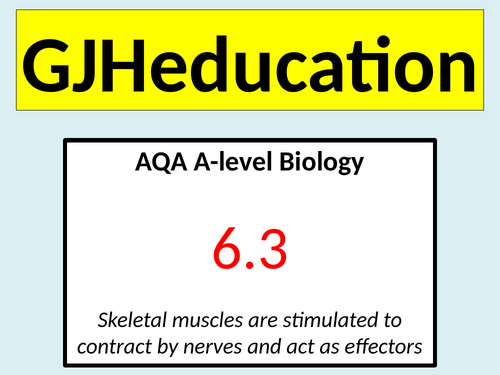




This is a fully-resourced lesson that covers the content of specification point 6.3 of the AQA A-level Biology specification which states that students should understand how skeletal muscles are stimulated to contract by nerves and act as effectors. The wide range of activities included in the lesson will engage and motivate the students whilst the understanding and previous knowledge checks will not only allow them to assess their progress but also challenge them to make links to other Biology topics.
The following content is covered in detail in this lesson:
- The ultrastructure of a myofibril
- The roles of actin and myosin in myofibril contraction
- The need for calcium ions and ATP in myofibril contraction
- The roles of calcium ions and tropomyosin in cross-bridge formation
- The roles of ATP and phosphocreatine in muscle contraction
This lesson has been designed for students studying the AQA A-level Biology course and ties in nicely with the other uploaded lessons from topic 6 such as synapses and NMJs and nerve impulses
Something went wrong, please try again later.
A really engaging lesson, thank you for sharing.
Report this resourceto let us know if it violates our terms and conditions.
Our customer service team will review your report and will be in touch.